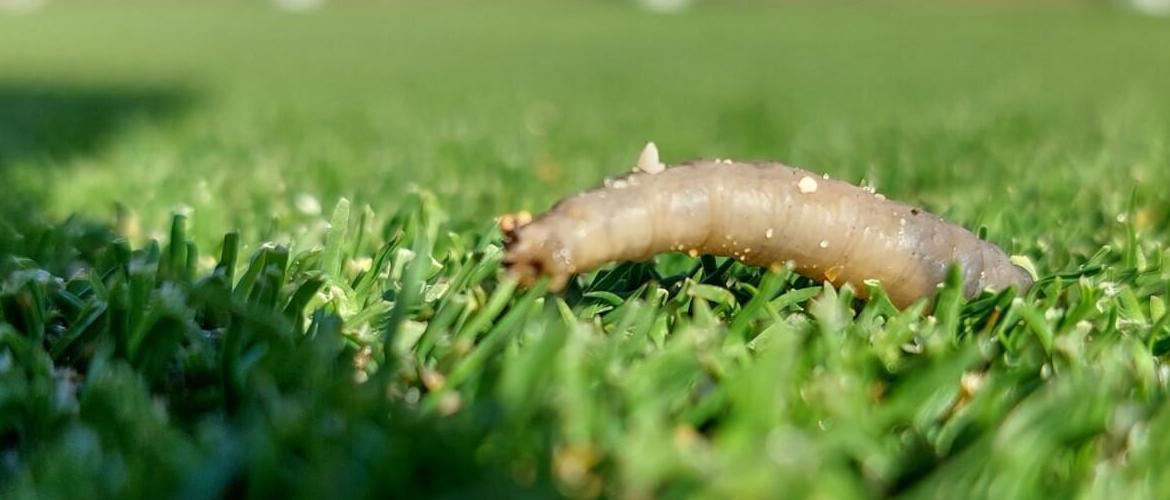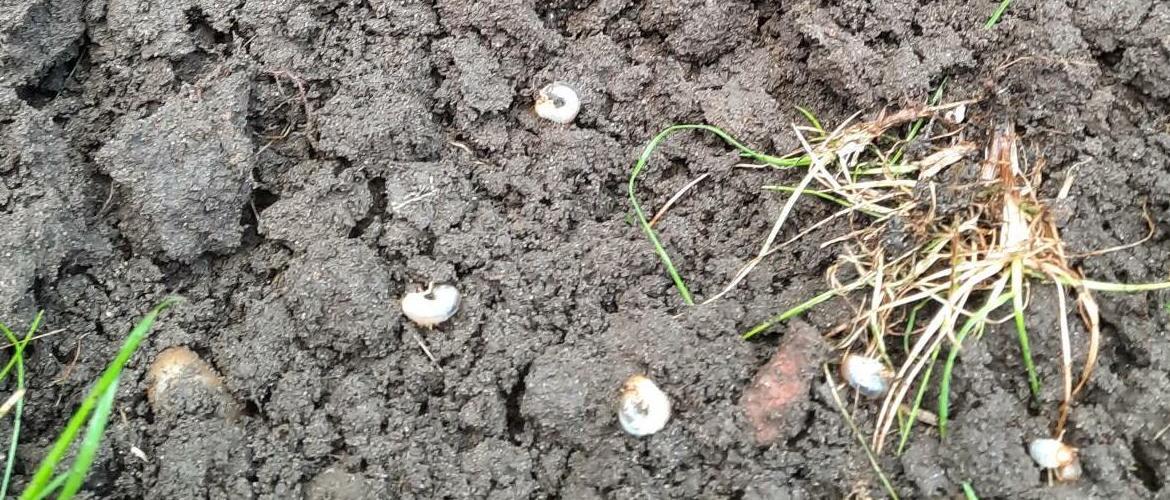The First step to getting control of turf pests is to know what your up against.
The two major insect pest groups in the UK & Ireland are:
- Leatherjackets (Crane fly larvae)
- Chafer grubs/white grubs (Chafer beetle or May/June bug larvae)
Leather jackets are probably the bigger problem in our area, as they will happily target sensitive areas like greens.

We’ll look again at leatherjackets later in the season.
We’ll park it for now and focus on chafers, but click the leatherjacket link above for information.
Chafers tend not to be such an issue in greens as the surfaces are more compacted.
Where you’ve got areas of damage have a look to see if you can find what’s causing the issue.
I’ve found chafer grubs in the top inch, and 10 inches down when its been really dry.
We can rule out leatherjackets as they don’t have any legs.
Hot tips for spotting chafer larvae:
- Chafer larvae have well defined legs, only near the head, harder to see when very small.
- Characteristic “C” shape bodies
- Creamy/bright white in colour
All of the grubs are chafers in the pictures below, accept for two vine weevil larvae in the photo with my wedding ring for scale.
Similar coloration and C shape but no legs.
See the carousel of images below …
Once you know they are chafers you can make a plan for next steps.
There are many chafer species but the main pest species to be aware of are:

Accurate identification really helps zone in on control strategies so don’t be ashamed to enlist the help of others to get it right.
Others in your area will have likely be dealing with similar issues.
Which chafer species do I have?
Always good to get a second opinion but tips to make it as easy as possible:
- Adult chafers tell us a lot, much easier and quicker to ID, and when you are seeing them helps narrow it down
- If all the larvae you found are the same size that may mean you have a chafer with a 1 year life cycle (Garden chafer), but bear in mind other life stages could be deeper down so its not fool proof.
- You can ID larvae by looking at the layout of hairs on their rear end with a hand lens, not the most fun activity.
I’ll try and do a short blog on each species, but as far as control goes we now have Acelepryn registered for the UK & Ireland.
Always follow the label recommendations but we want to be targeting peak flight
(when most of the adult beetles have flown/period of maximum activity)
This allows the Acelepryn to be in the “grub zone” when the chafer eggs hatch and the larvae begin feeding.
Historically we’ve received a lot less sightings on pest tracker for chafers compared to leather jackets.
So it’s harder for me to confidently give an expected date of flight for each species.
Also some chafer species fly in the evening when we’re not around to spot them.
Please do log any sightings on pest tracker!









